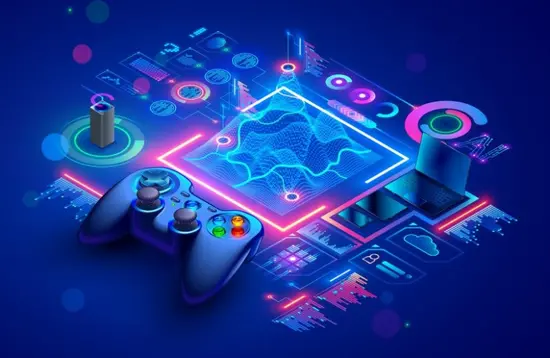From the perspective of Pirate Nation's independent market, let's look at the current investment ideas for chain game projects
Author: Cookie, BlockBeats
Blockchain games are a very unique track. As we enter this year, 2024, if you are like me, a casual blockchain game player (meaning you don't focus your main energy on the blockchain game track and spend a lot of time actually playing blockchain games every day), your impression of blockchain games might just be that they are becoming increasingly refined and playable.
In the past, the gold farming model of blockchain games we were familiar with generally included:
- There is an entry cost. For example, in Wolf Game and StepN, entering earlier means a lower entry cost, while entering later means a higher cost.
- The value of the token highly depends on its consumption. Or at least, players are very concerned about this.
Based on these two points, the "death spiral" issue has sparked countless discussions.
However, in reality, many of the blockchain game projects that are making money this year no longer follow the previous models.
Observing Blockchain Game Asset Investment Ideas from Pirate Nation
One of the most typical examples is Pirate Nation. Even if you started playing over a month before the token launch, you could still earn hundreds of USD. Recently, Pirate Nation has gained more attention due to its NFT series and the token $PIRATE, which has developed an independent market.

After the TGE selling pressure, $PIRATE has steadily risen over the past month

The floor price of the NFT series has also reached new highs repeatedly
Why has Pirate Nation been able to succeed? There are mainly three reasons:
- The team has a strong background and substantial financing support. The game studio behind it, Proof of Play, announced last September that it had completed a $33 million financing round led by Greenoaks Capital and a16z Crypto. CEO Amitt Mahajan was previously a developer at Epic Games, the development director at Zynga, and a co-founder of one of Zynga's flagship games, FarmVille (the prototype of "QQ Farm").
- The speed of game updates and iterations is fast.
- The regulation of token acquisition is well managed.
So, returning to the theme of this article, where are the opportunities for casual blockchain game players? From the floor price trend of the NFT series above, we can see that Pirate Nation only had its TGE in June this year, and its NFT series remained around 0.15 ETH for over a month even after announcing substantial financing. If you bought in at that time and held on until now, excluding the $PIRATE shares obtained, you would have nearly 10x returns.
This is the current thinking of many NFT players investing in blockchain game NFTs—looking for blockchain game projects with substantial financing and reliable background teams, betting on future token expectations. As long as the team updates frequently and does not become complacent, once the token expectations are officially announced, many other investors who do not focus on the project itself but on market news will come in to "lift the sedan chair."
Today's "Play 2 Earn" is More Like "Play 2 Airdrop"
Why can Pirate Nation's NFTs still rise after the TGE? This is another area where current blockchain games differ from the past. Previously, blockchain games typically operated on a dual-token model: one in-game token with no supply limit and one governance token. As the number of players surged, the project team had to continuously regulate it, ultimately leading to a loss of control. However, Pirate Nation's $PIRATE is an in-game token with a supply limit, distributed to players as rewards during the TGE. Want more? Then keep playing the game.
Moreover, Pirate Nation is also developing a series of game infrastructures. Currently, staking $PIRATE allows players to earn Proof of Play points. What if they issue another token for future infrastructure? The valuation would certainly be higher than that of a simple blockchain game project. So, thinking from this perspective, we can easily draw parallels with Blur and Blast. Although Blur is not a blockchain game, it follows a similar model—first, there is a mature product (NFT marketplace), trading in the market to acquire tokens, and finally launching a chain (Blast) to keep users within the ecosystem.
Players engage in games, but token rewards are not settled immediately; instead, they are distributed at a certain time. This approach has almost become a trend, leading to significant changes in investment strategies. Compared to Axie's model of competing with studios and hoarding NFT assets in the blockchain game track, casual blockchain game players can now find a new path to earn by treating games as games rather than gold farming tools.
Last year, Parallel's PFP series only required players to achieve a total of 25 victories across various races to receive it for free, and later the floor price broke 1 ETH. This year, The Beacon's first token reward event was obtained through playing games and participating in social tasks, with the TGE still half a year away. They also sold a portion of the token shares in the form of NFTs, and to obtain these subscribed token shares later, players still need to play the game. Nevertheless, with a token FDV of about 20 million, the 10,000 NFTs that can later acquire tokens sold out at a price of 0.115 ETH, and the prices of their pet NFTs have also been driven up by players.
The Thinking of Casual Blockchain Game Players: Shifting the Perspective from "Games" Back to Crypto Projects
Thus, the criteria for judging whether a blockchain game project can be profitable have also changed:
- Playability is certainly important, but the quality of the game itself is not the determining factor for profitability; rather, the buzz generated by the game's quality is key.
- The project team should not dilute token value by excessively issuing NFT assets; the clearer and more decisive the project team is in positioning the NFT series and empowering that series (token shares), the better.
- It is best to be able to calculate the FDV relatively clearly; everyone will compare it themselves. As long as it appears to have good value compared to "PPT projects," there will be no shortage of people willing to take a chance.
The least cost-effective operation is to wait until a blockchain game becomes so popular that we see a lot of discussions about it on social media before starting to gold farm. At that point, it will be very difficult for casual blockchain game players to achieve significant returns. We may not play blockchain games, but we should liberate our thinking about observing blockchain game projects from the positioning of "games" and instead observe from the perspective of crypto projects—does this project’s financing and team situation attract attention? Does the content presented by this project (gameplay) attract attention? If this project has a token, does its current valuation offer good odds in our view?
There are even many blockchain game projects where token activities can be participated in by completing social media tasks. I have mentioned such projects in previous articles (Related Reading: A Review of 4 Projects Worth Low-Intensity Engagement, A Review of 6 Projects Worth Low-Intensity Engagement | E02), including the NFT series of Super Champs, which has already increased by about 50%. (This does not constitute any investment advice, and I will strive to uncover more similar blockchain game projects for everyone in the future.)
In summary, the current returns on blockchain game projects are a trade-off of time for space. Compared to the Solana meme tokens or Bitcoin ecological infrastructure, the blockchain game track does not have the same level of attention as these top market focuses, but everyone loves tokens. Therefore, there will be information asymmetry regarding blockchain game assets related to tokens. When they are not being focused on by the market, finding relatively cheap targets with high potential for investment and either selling when the market reacts or continuing to hold while participating in the game is feasible, allowing for both offensive and defensive strategies. Ultimately, blockchain game projects are also crypto projects, so we do not need to spend an excessive amount of energy playing games; playing games itself is more like research on blockchain projects, helping us assess whether the team is reliable and whether it can generate sufficient market buzz in the future.











